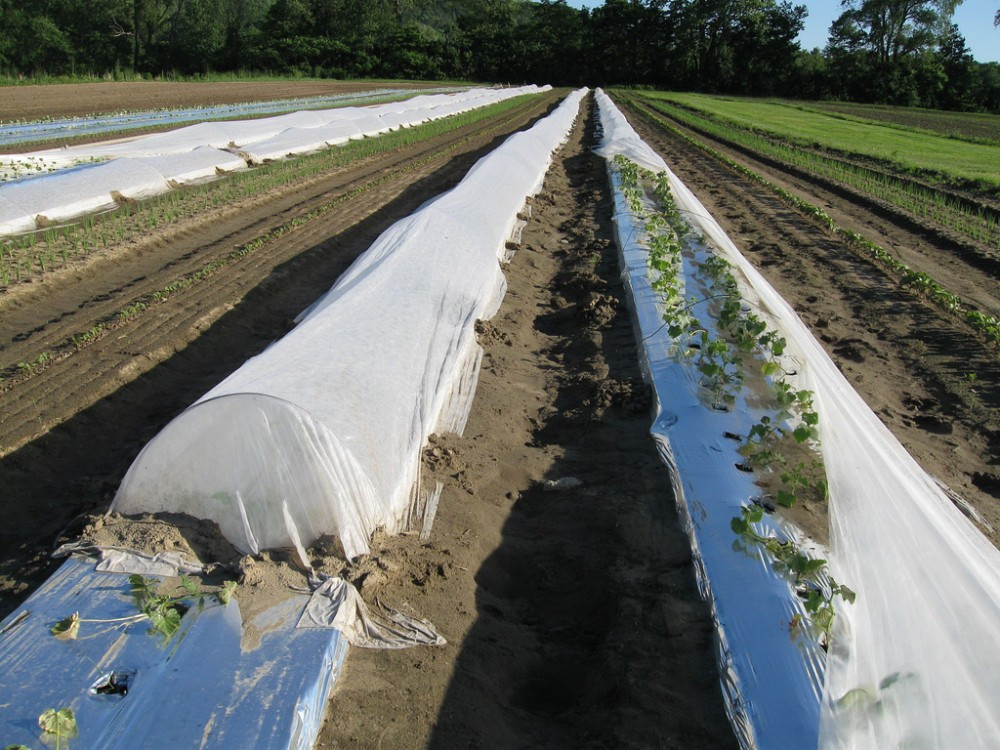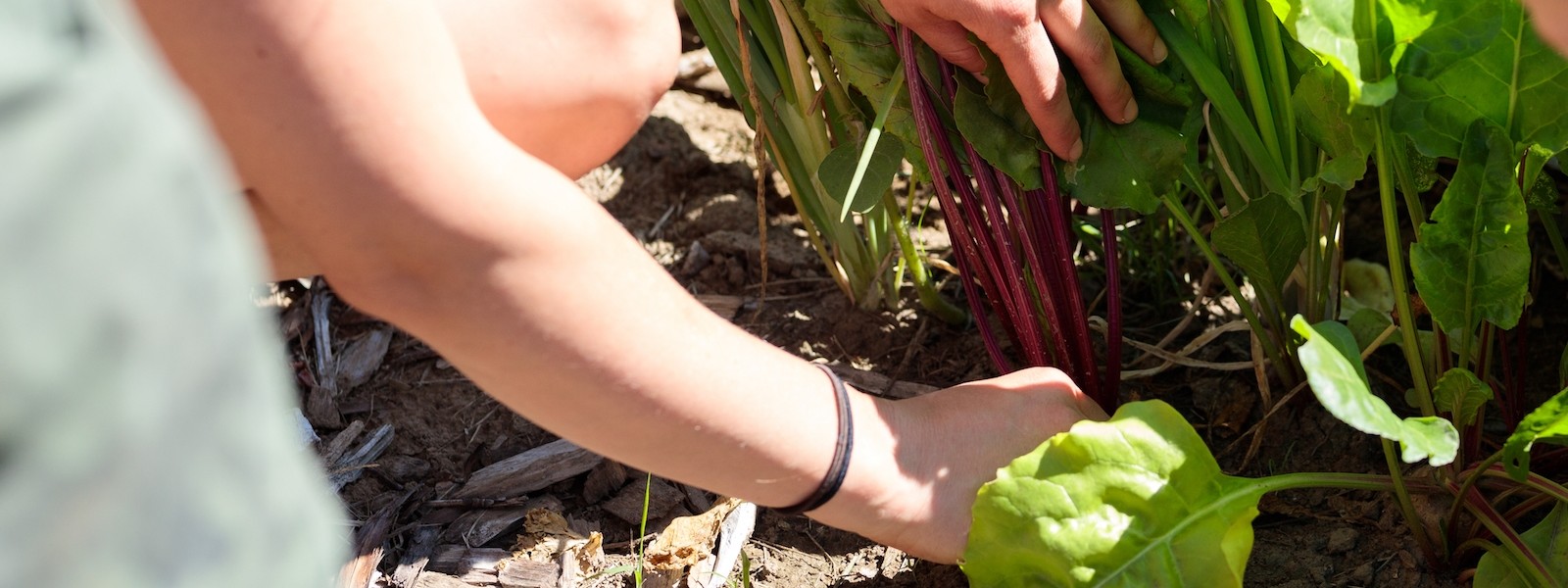Geotextiles: Row Cover or Reemay Cloth
In the Northeast, row cover is a farmer’s best friend. It is a non-woven polypropylene or polyester clothlike material, often called Reemay. It transmits 70% of available light, keeps heat in and bugs out, and is an excellent windbreak for young transplants. It allows rain and overhead irrigation to reach plants and soil.
Reemay will protect plants from frost damage down to 28ºF. The fabric can be cut with scissors to fit over conventional-width rows or used as-is for wide-row plantings. When not being used, the material should be folded and stored away from sun and moisture.

How to Install
Prepare the bed as normal. Hoops can be used to create a tunnel of row cover, which is especially useful for crops that grow taller like tomatoes and peppers, or the row cover can lay directly on the crop, for plants like radishes, bok choi, and salad mix. If laying the cover directly on the ground, make sure to provide enough slack in the cover for the crop to grow and do not pull the cover taut. Make sure to seal the edges of the row cover with sandbags, soil or with row cover pins. Remove the cover for pollination, weeding, harvest, or when the crop is finished.
Pros
Here are some of the advantages you can expect:
- Earlier harvests and higher yields because there is frost protection, an increase in soil temperature and decreased pest pressure.
- Pest & Disease Reduction. Pests are reduced as there is a physical barrier around the crop. This physical barrier method also helps break the cycle of pest infestation, reducing the number of pest breakouts even into the next season. Because there is a decrease in pests, there is also a decrease in the diseases these pests carry.
- Microclimate. Row cover creates a microclimate on the bed covered, with a specific humidity and temperature.
- No insecticides necessary. Insect netting is an organic way of battling pests rather than turning to pesticides and other harmful chemicals which, over time, may increase your pest pressure.
- Reusable. Row cover is durable and can be used for multiple seasons if used with care.
Cons
Here are some disadvantages to consider:
- Initial cost. There are initial costs in installing row cover. However, since the cover is reusable, these costs may be lower than using conventional insecticides.
- Installation, removal and disposal. Installing row cover can be timely. Additionally, it needs to be removed for weeding, harvest and at the end of the crop’s lifecycle. After the cover is worn out, it needs to be disposed of or used for other purposes. Heat will build inside the row cover so there may be a need for increase in irrigation. Some crops will not do well with row cover at the height of the summer because temperatures may get too high.
- Degradation. Because row cover is made of fabric, it will degrade over time with use and exposure to sun and wind.
- Timing is important when using row cover. If the row cover is installed after an infestation, even if the infestation is not visible, the cover will not solve any pest problems. Pay close attention to your crop, scouting for any signs of bug presence before taking any pest control measures.
Where to Buy
Row cover can be bought from many companies, including Johnny’s Selected Seeds. The most common brand of row cover for gardeners and farmers is Agribon.
Sources
CCF staff
‘Garden Fabric, Row Covers, Shade Netting,’ gardeners.com
www.agribon.com

